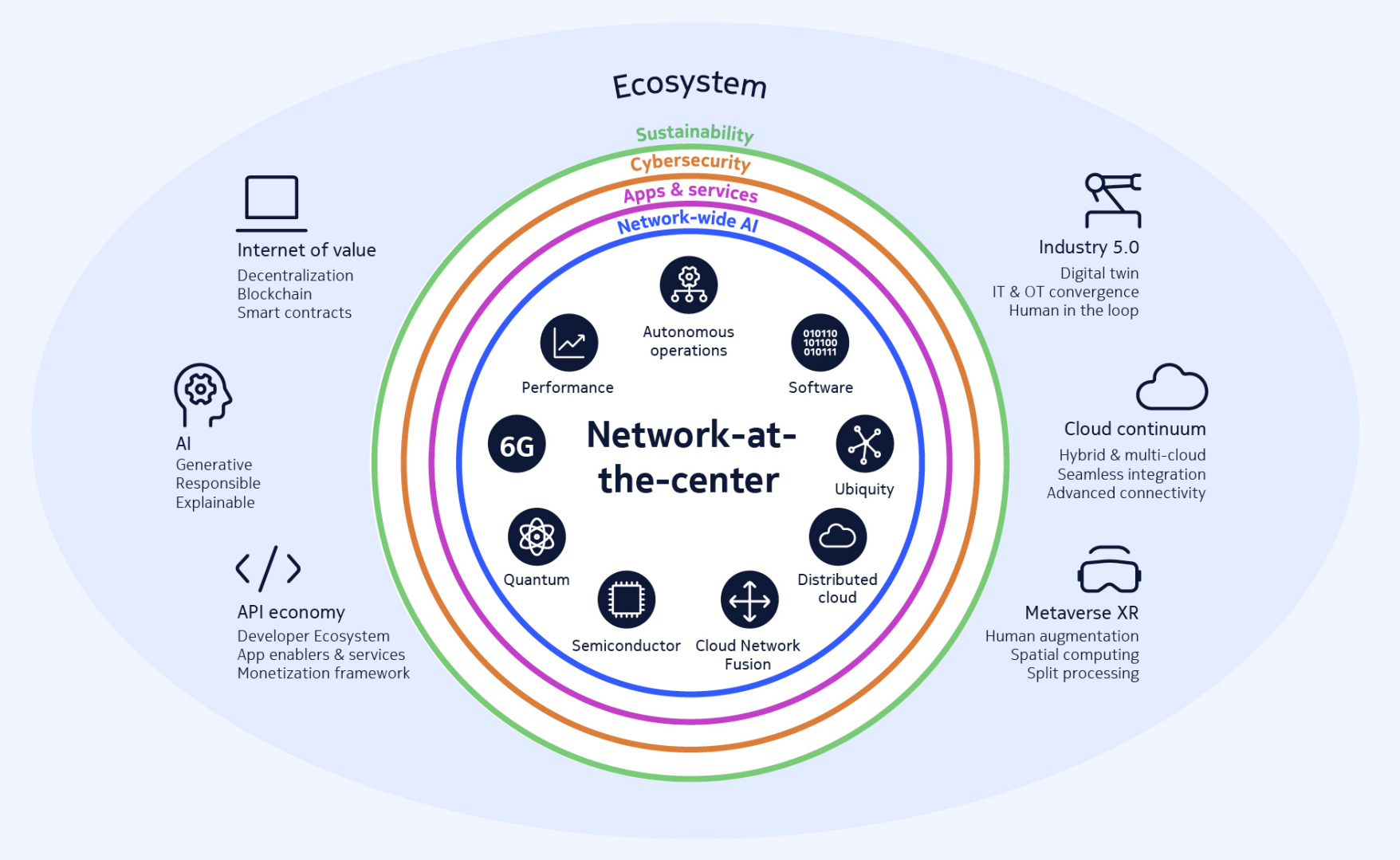Embracing Emerging Technologies
Nokia is gearing up to significantly bolster its network equipment and services portfolio in response to the anticipated surge in network demand. This surge is expected to arise from advancements in the metaverse, Web3, and artificial intelligence (AI). The telecom infrastructure giant has laid out its ambitious plans in the “Technology Strategy 2030” report, aiming to reshape future network architecture to support these burgeoning innovations.
Predicted Rise in Network Demand
Nokia projects a substantial increase in network demand, estimating a growth of 22% to 25% from 2022 through 2030. This forecast is largely attributed to the mainstream emergence of generative AI and virtual reality devices, as explained by Federico Guillén, the president of network infrastructure at Nokia.
The cornerstone of Nokia’s strategy involves significant investments in a wide array of network solutions. Among the six ecosystems Nokia plans to serve, the Internet of Value stands out with its emphasis on decentralization, blockchain technology, and smart contracts. Additionally, Nokia’s focus on the metaverse encompasses human augmentation, spatial computing, and split processing, highlighting the company’s commitment to cutting-edge technological advancements.
The strategy also extends to AI, Industry 5.0, the Application Programming Interface (API) economy, and the Cloud continuum, indicating Nokia’s comprehensive approach to future network infrastructure.
Pioneering Research and Applications
In pursuit of these goals, Nokia established two labs in 2022 dedicated to exploring the metaverse and its foundational technologies. These initiatives led to various industrial and large-scale metaverse projects throughout 2023.
One of Nokia’s notable innovations is the development of a future network architecture based on network digital twin technology. Digital twins simulate physical objects for testing and prototyping, proving invaluable in numerous industries. For instance, in South Australia, Nokia leveraged the metaverse to aid Cessna aircraft technicians at remote airports using a 5G connected Microsoft HoloLens for augmented reality instructions, as shared by Robert Joyce, Nokia Oceania’s Chief Technology Officer.
Furthermore, research in Finland introduced “Metahumans” — digital twins embodying internal traits such as emotions and cognitive states of individuals. This concept explores the metaverse’s potential to revolutionize employee management through gamification, contrasting traditional optimization methods.
Real-World Impact
Digital twins hold the promise of transforming industrial simulations by providing data that can optimize work strategies, enhance safety measures, and improve overall performance and output. Nokia’s forward-looking initiatives underscore its commitment to leading the evolution of network technology, catering to the next generation of digital advancements.
